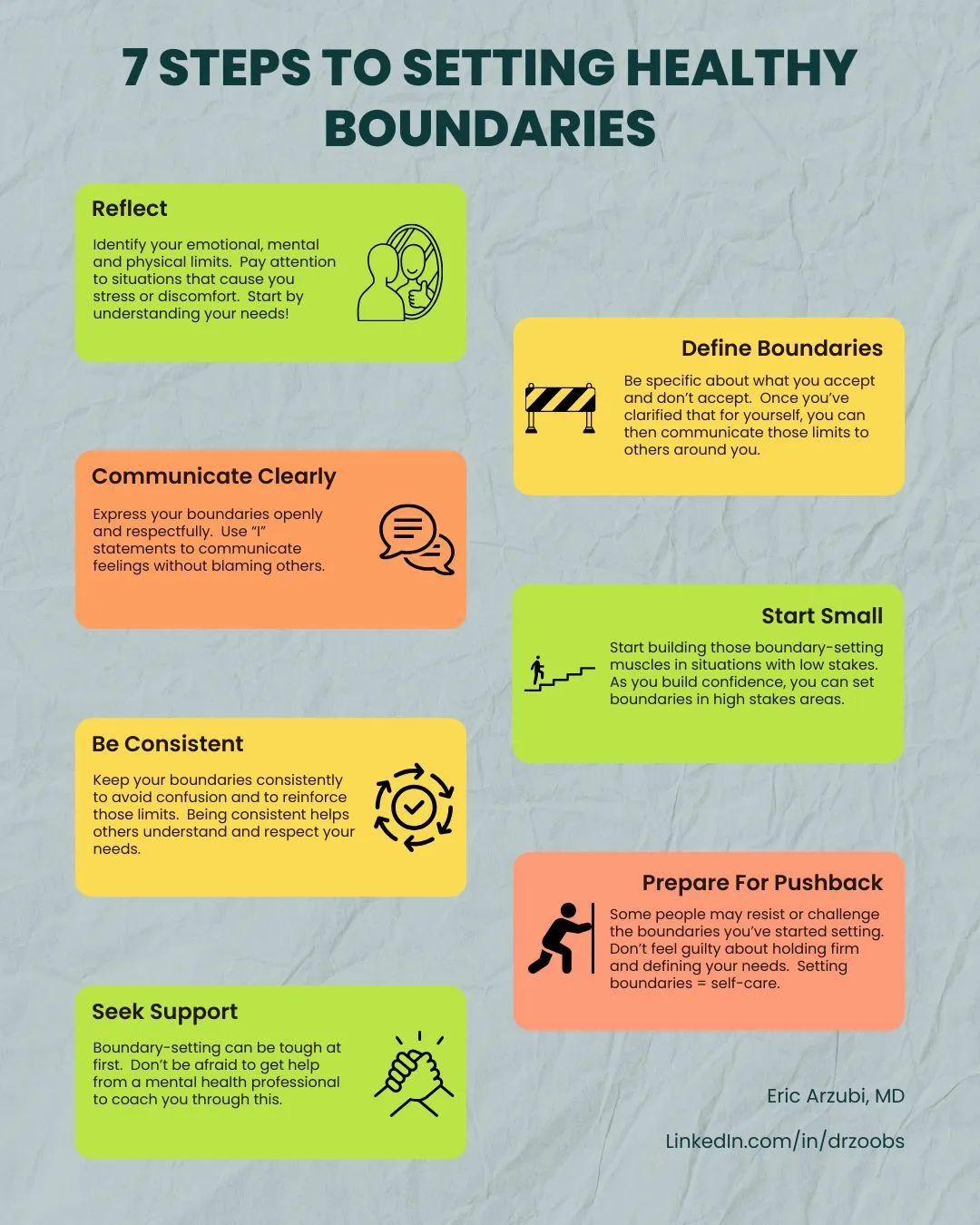7 steps to setting healthy boundaries.
Boundaries protect your peace of mind.
There are more types of boundaries than we often appreciate:
- physical
- emotional
- mental
- time
- material
- sexual
- spiritual
When you learn to establish and maintain these boundaries, you’ll improve your mental health and your relationships.
Here’s how to get started:
- REFLECT Identify your emotional, mental and physical limits. Pay attention to situations that cause you stress or discomfort. Start by understanding your needs!
- DEFINE BOUNDARIES Be specific about what you accept and don’t accept. Once you’ve clarified that for yourself, you can then communicate those limits to others around you.
- COMMUNICATE CLEARLY Express your boundaries openly and respectfully. Use “I” statements to communicate feelings without blaming others.
- START SMALL Start building those boundary-setting muscles in situations with low stakes. As you build confidence, you can set boundaries in high stakes areas.
- BE CONSISTENT Keep your boundaries consistently to avoid confusion and to reinforce those limits. Being consistent helps others understand and respect your needs.
- PREPARE FOR PUSHBACK Some people may resist or challenge the boundaries you’ve started setting. Don’t feel guilty about holding firm and defining your needs. Setting boundaries = self-care.
- SEEK SUPPORT Boundary-setting can be tough at first. Don’t be afraid to get help from a mental health professional to coach you through this.
Your boundaries are the invisible force field that protects your peace of mind.





